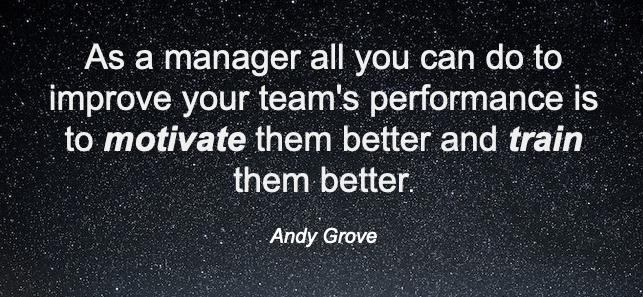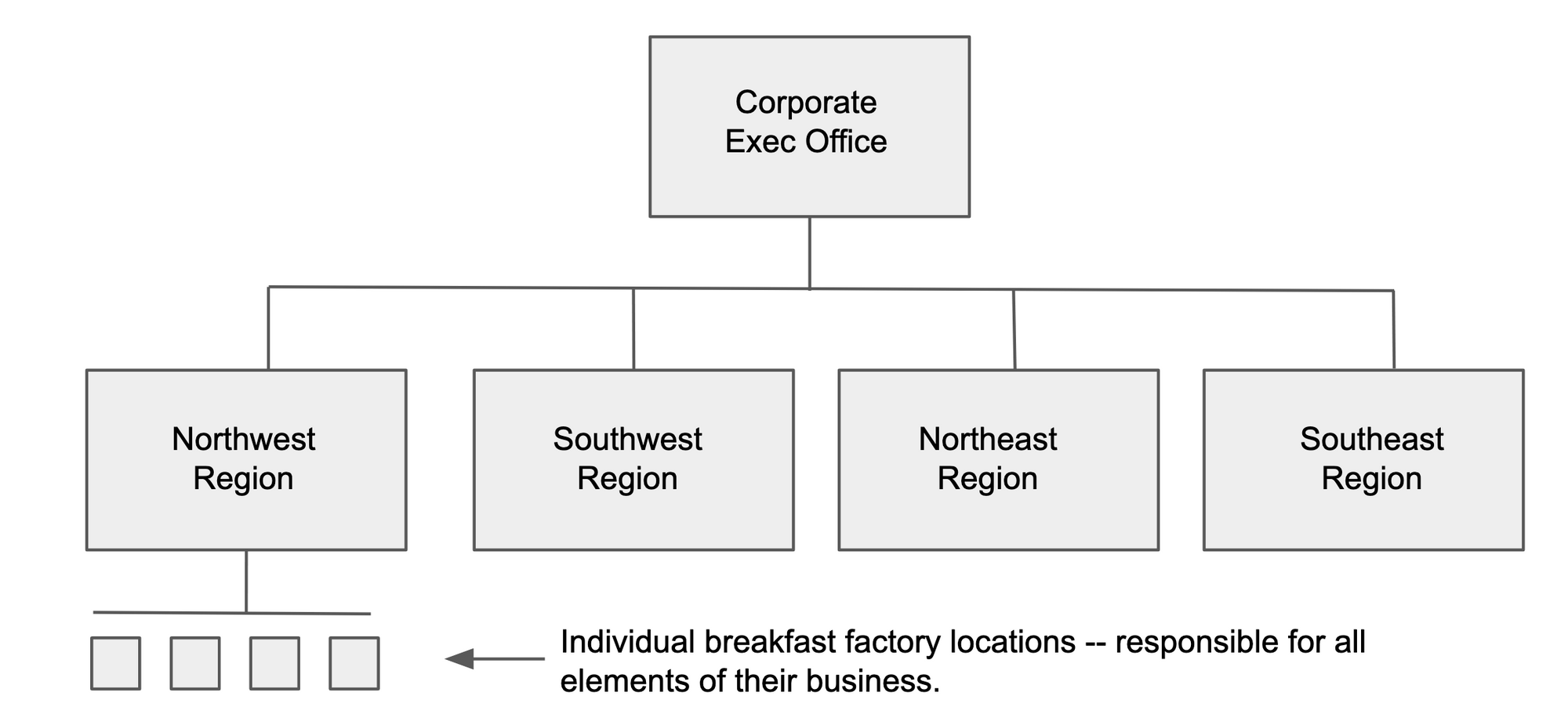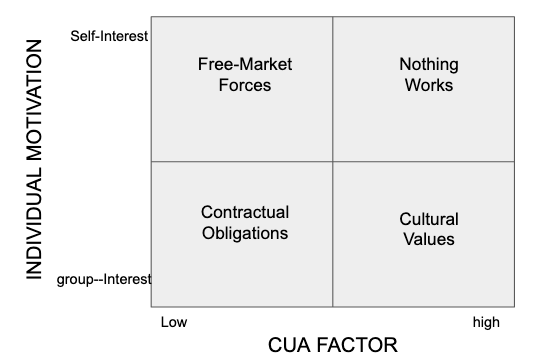
Teams Of Teams
If you haven’t already read High Output Management - Part I, and High Output Management - Part II please do.
Hybrid Organizations
Though most are mixed, organizations can come in two extreme forms: in totally mission oriented form or in totally functional form.
Mission Oriented: In the mission oriented organization which is completely decentralized, each individual business unit pursues what it does – its mission – with little tie-in to other units. Each unit is responsible for determining location, constructing its own building, doing its own merchandising, acquiring and maintaining its own personnel and doing its own purchasing.

Mission-Oriented Organization
Functional: At the other extreme is the totally functional organization, which is completely centralized. The merchandising department is responsible for merchandising at all locations, the staff of the personnel organization hires, fires and evaluates personnel at all branches; and so on.

Hybrid: Intel has a hybrid organization. It has a mix of business divisions, which are mission oriented, and their functional groups. This is much like the way I imagine any army is organized. The business divisions are analogous to individual fighting units, which are provided with blankets, paychecks, aerial surveillance, intelligence and so forth by the functional organization, which supplies such services to all fighting units. Functional groups can be viewed as if they were internal subcontractors.

Hybrid Organization - Intel as an example
One big advantage with Hybrid organizations is that resources can be shifted and relegated to respond to changes in corporate-side priorities. Intel’s functional groups allow the business units to concentrate on mastering their specific trades rather than having to worry about production and development.
This approach also has its disadvantages. The most important is the information overload hitting a functional group when it must respond to the demands made on it by diverse and numerous business units. Even conveying the needs and the demand often becomes difficult – a business unit has to go through a number of management layers to influence decision-making in a functional group.
The most important consideration should be this: the shift back and forth between two types of organization can and should be initiated to match the operational styles and aptitudes of the managers running the individual units. The most important task before such an organization is the optimum and timely allocation of its resources and the efficient resolution of conflicts arising over that allocation.
To make hybrid organizations work, you need a way to coordinate the mission-oriented units and the function groups so that the resources of the latter are allocated and delivered to meet the needs of the former.
Modes Of Control
Our behavior in a work environment (and outside of a work environment) is controlled by three invisible and pervasive means:
- Free-market forces (i.e. you buy a particular product from the seller that gives you the best price)
- Contractual obligations (i.e. you are obligated to stop at the red light unless you are willing to lose your driver’s license)
- Cultural values (i.e. you stop to help people who were in an accident on the freeway)
There is a temptation to idealize what I’ve called cultural values as a mode of control because it is so “nice”, because everybody presumably cares about the common good. But this is not the most efficient mode of control under all conditions. It is no guide to buying tires, nor could the tax system work this way.
Given a certain set of conditions, there is always a most appropriate mode of control, which we as managers should find and use.
How do we do that? There are two variables here: first, the nature of a person’s motivation; and second, the nature of the environment in which the person works. An imaginary composite index can be applied to measure an environment’s Complexity, Uncertainty and Ambiguity which we will call a CUA Factor.

It is the manager’s job to identify which mode of control is most appropriate
Examples:
Cindy, the process engineer, is surrounded by tricky technologies, new and not fully operational equipment, and development engineers and production engineers pulling her in opposite directions. Her working environment, in short, is complex.
Bruce, the marketing manager, has asked for permission to hire more people for his grossly understaffed group; his supervisor waffles, and Bruce is left with no idea if he’ll get the go-ahead or what to do if he doesn’t. Bruce’s environment is uncertain.
Mike, Intel transportation supervisor, had to deal with so many committees, councils, and divisional manufacturing managers that he didn’t know which, if any, end was up. He eventually quit, unable to tolerate the ambiguity of his working environment.
When self-interest is high and CUA factor is low, the most appropriate is the free-market mode.
As individual motivation moves toward group interest, the contractual mode becomes more appropriate.
When group-interest orientation and CUA factor are both high, the cultural values mode becomes the best choice.
Apply this model to a new employee as follows: What is their motivation? It is very much based on self-interest. So you should give them a clearly structured job with low CUA factor. If they do well, they will begin to feel more at home, worry less about themselves, and start to care more about their team. They will get to a point where they can take on more complex, uncertain and ambiguous jobs.